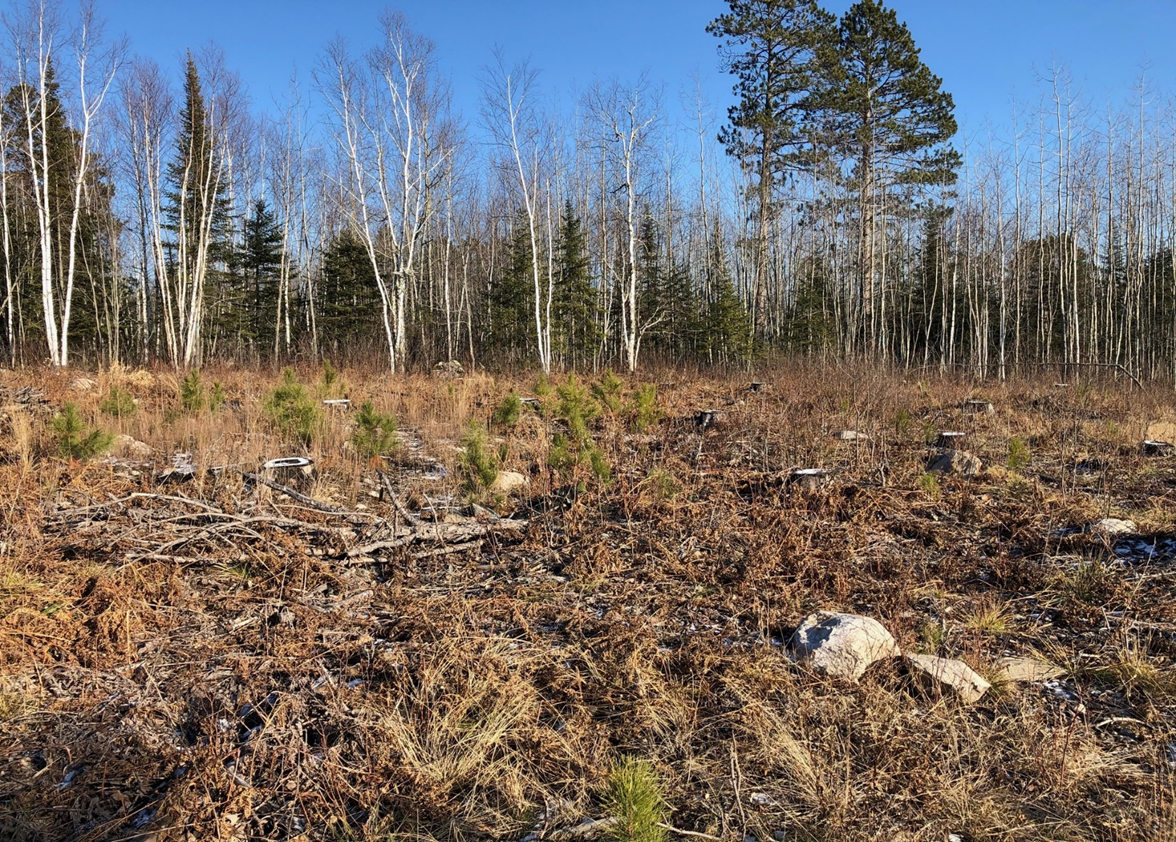Overview
This site was one of the first final harvests of natural origin red pine (NORP) on School Trust land in the Hibbing area. This case study looks at the use of both natural and artificial regeneration practices to regenerate a NORP site in a manner that mimics the structure and diversity of a stand reinitiated by catastrophic fire. The use of direct seeding and spatially variable, low density planting were used to provide a level of insurance that we would successfully regenerate a healthy, fully stocked, mixed red pine stand that would continue to provide future forest products and revenue to the School Trust.
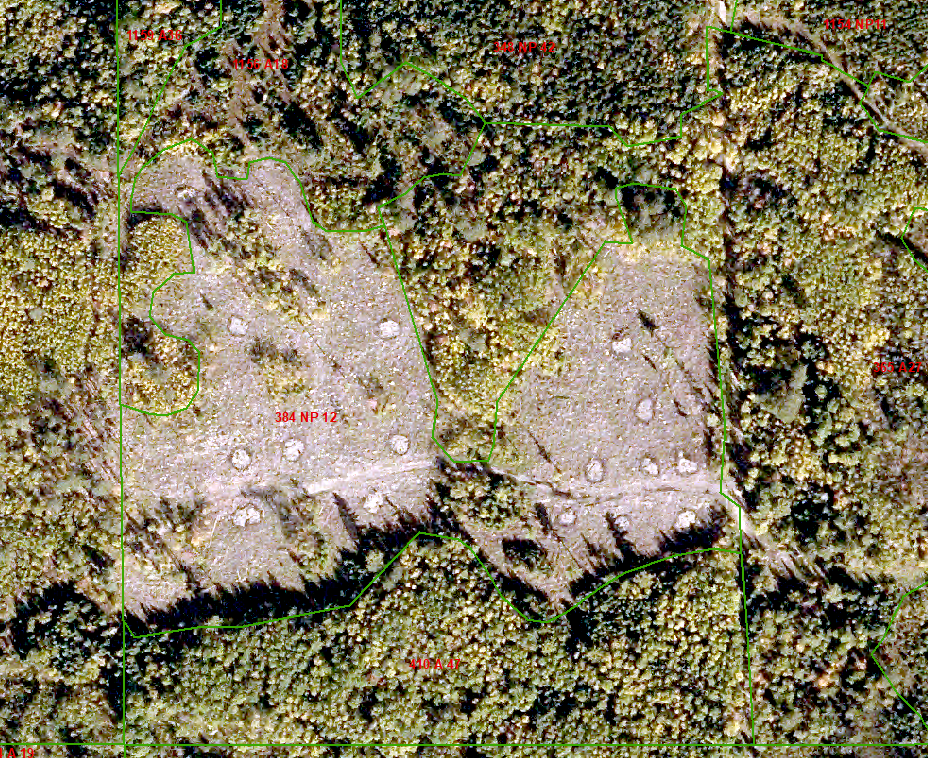
Figure 1: Aerial photo view of the site
Silviculture Objective(s)
Use a combination of natural and artificial regeneration practices to regenerate a natural origin red pine site with characteristics that mimic a natural origin stand in structure and diversity, while maintaining red pine as the dominant species.
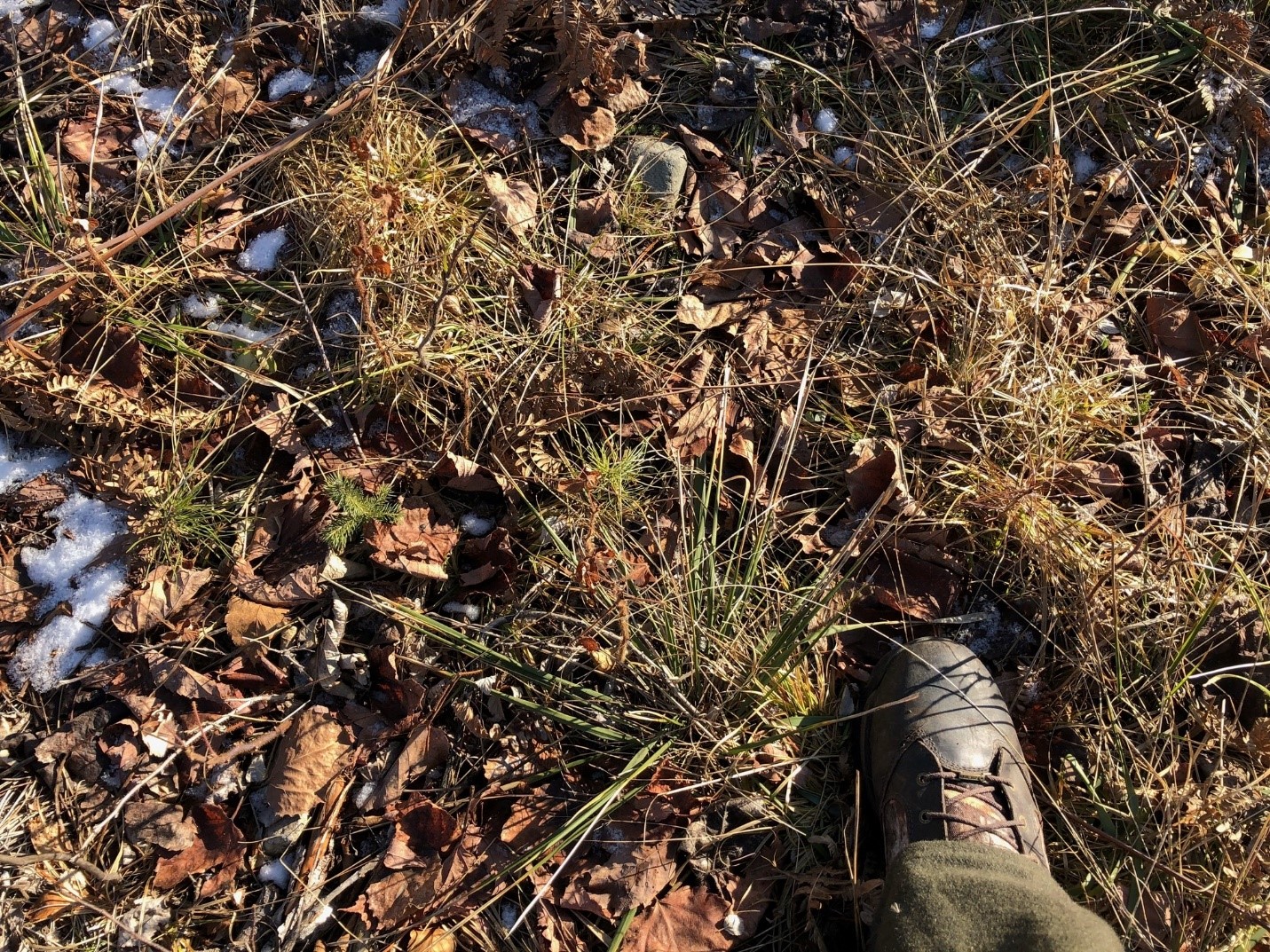
Figure 2: Good example of diversity present on site. Seedlings from left to right: red pine, white spruce, white pine and jack pine
Pre-treatment stand description and condition
Stand establishment and management history:
Stand is estimated to be of natural origin from 1906. Stand was thinned several times, the last of which was in 2000.
Pre-treatment species composition:
Total basal area was 145 square feet per acre. Red pine averaged 14” dbh with 47 cords/acre, white pine averaged 15” dbh with 1 cord/acre, aspen averaged 10” dbh with 0.5 cord/acre, paper birch averaged 8” dbh with 1 cord/acre, and white spruce averaged 14” dbh with 0.5 cord/acre. Patchy advance regeneration existed with 125 trees/acre of white pine saplings, 100 trees/acre of red pine saplings, and 200 trees/acre of balsam fir, along with heavy hazel brush understory.
Pre-treatment forest health issues:
The stand had significant signs of Diplodia damage on advance regeneration.
Landowner objectives/situation:
Minnesota’s Permanent School Fund receives income from economic activities on School Trust Lands which are managed by the MN DNR. Revenue on School Trust Lands is generated from forest management amongst other activities. Forest management activities on School Trust lands are planned and carried out by MN DNR.
As it relates to forest management on School Trust Lands, MN DNR has the authority and responsibility to achieve the goals outlined in Minnesota Statute, Section 84.027, Subd. 18 including:
- manage efficiently and with undivided loyalty;
- reduce operating expenses and maximize revenues deposited in the Permanent School Fund;
- maximize long-term economic returns while maintaining sound natural resource conservation and management principles;
- balance short-term revenues and long-term interests so that long-term benefits are not lost in an effort to maximize short-term gains;
- maintain the integrity of the trust and prevent the misapplication of its lands and its revenues.
Silviculture Prescription
Clearcut with reserves final harvest on 13 acres, removing all red pine and balsam fir. Reserve all white pine, white spruce, aspen and paper birch. Broadcast full tree skidding during dry, non-frozen soil conditions to set back the heavy hazel brush and scarify the site for regeneration. Pile slash and chip or burn piles to remove as much of the Diplodia inoculum on cones and slash as possible. Following harvest direct seed by hand at the following rates: red pine at 2 oz/ac, jack pine at 2 oz/ac, white pine at 0.5 oz/ac, and white spruce at 0.5 oz/acre. Follow harvest with a spring planting with red pine at 400 trees/acre incorporating a variable density spacing technique. Mechanical brush saw release as needed.
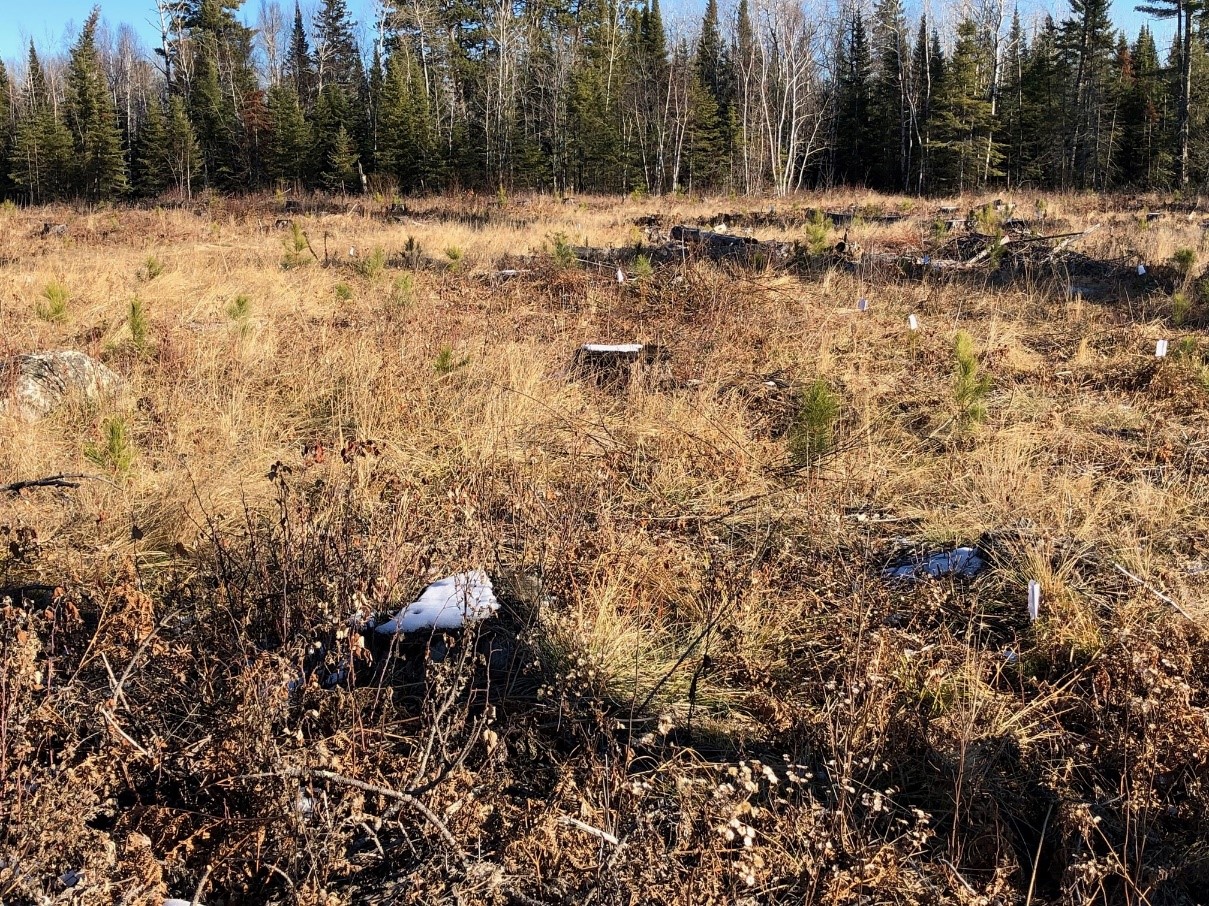
Figure 3: Example of variable density regeneration pattern and bud-capped jack pine and white pine mixed with red pine
What actually happened during the treatment
The final harvest on this site took place in June 2017, removing 624 cords of red pine and 2 cords of balsam fir. The operator did an exceptional job providing consistent scarification across the site during full tree skidding operations. The slash was lightly piled in multiple piles scattered across the site using a stroke delimber. Shortly after the harvest was completed the site was hand seeded at the rates noted above in early July. In August the slash piles were burned with nearly full consumption due to being lightly piled with the delimber. Spring 2018 the site was planted with 311 1-0 RP container seedlings from PRT at 400 trees/acre, planting density was varied across the site. After the whole site was initially planted at one low density, planting crews traversed the site again increasing planting and increasing densities in a non-uniform manner.
Mechanical brush saw release was completed in leaf-off conditions in December 2020 after three years of planted seedling growth.
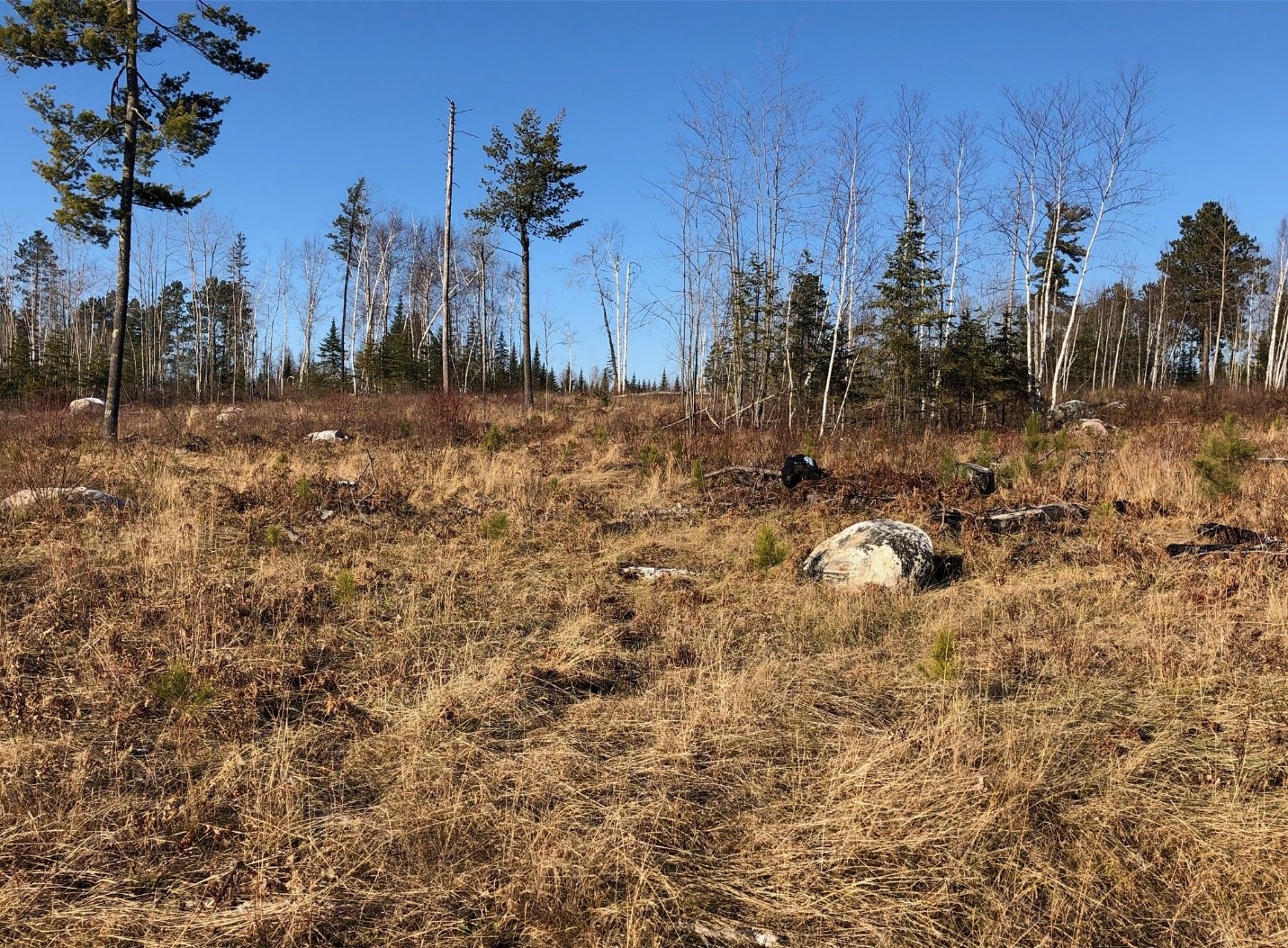
Figure 4: Looking north across the site with a good view of reserves and advanced regeneration
Post-treatment assessment
A regeneration survey was completed in Fall 2018 (Table 1). Composition was 427 stems/acre of planted red pine with 100% stocking, 64 stems/acre of natural red pine with 36% stocking, 9 stems/acre of natural white pine, 145 stems/acre of aspen with 18% stocking, and 64 stems/acre of paper birch. Competition was minimal but expected to fill in quickly with 282 stems/acre of raspberry with 27% stocking, 109 stems/acre of willow with only 9% stocking, and minimal presence of hazel.
Table 1: October 2018 regen survey data for crop and competition species

A regeneration survey was completed in May 2020 (Table 2). Composition was 408 stems/acre of planted red pine with 100% stocking, 54 stems/acre of natural red pine with 31% stocking, 113 stems/acre of jack pine with 31% stocking, 23 stems/acre white pine at 15% stocking, and 15 stems/acre with 7% stocking. Competition increased in abundance and height with 5,652 stems/acre of woody competition with 100% stocking and over half of those stems being hazel.
Table 2. May 2020 regen survey data for crop and competition species

The site has several large scattered residual white pine and white spruce along with clumps of residual mature aspen/birch and clumped advance regeneration of balsam fir/white pine and aspen/birch.
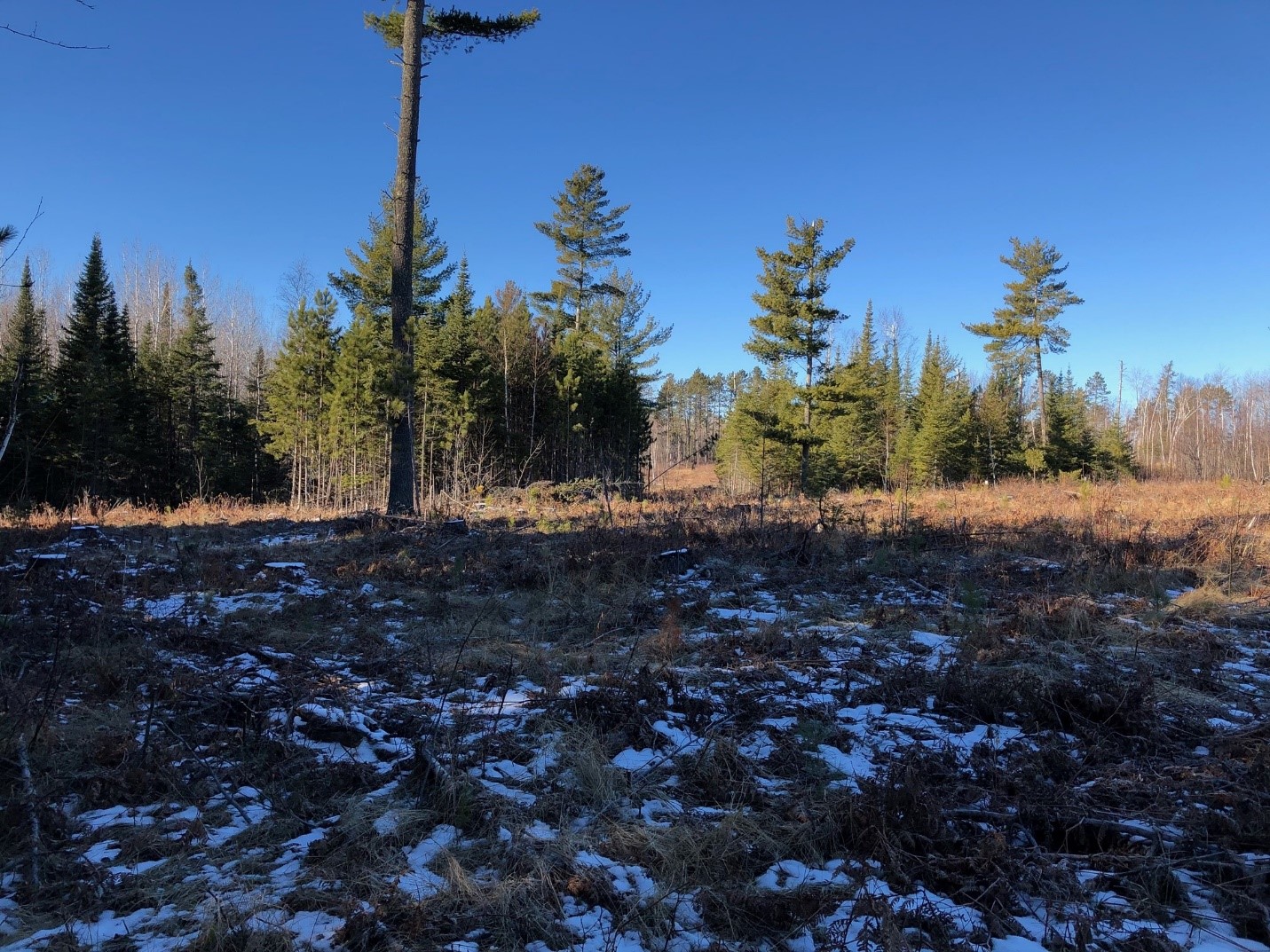
Figure 5: Looking west across site with a good view of mixed pine balsam advanced regeneration and reserve white pine
Plans for future treatments
Regeneration survey planned for fall of 2022. Mechanical brush saw release of crop trees summer 2023.
Costs and economic considerations
Revenue from final harvest $33,807.91.
Hand seeding cost $49.60/acre for seed, $15.38/acre for labor (4 hours) to seed 13 acres, $64.98/acre for a total cost of $844.74.
Planting costs $99.00/acre for a total of $1287.
Leaf-off brush saw release completed December 2020, $145/acre.
Revenue from harvest $2,600.61/acre, Reforestation costs to date $308.98/acre.
Other notes
The prescription for this site was written by retired forester Tim Russ, it was a compromise through coordination with the divisions of Wildlife and Ecological and Water Resources.
This case study will continue to be updated as further treatments are completed until site is free-to-grow.
This case study was reviewed by MN DNR Silviculture Program Staff Mike Reinikainen. Case study submitted on 06/16/2020. Revised with new regen survey data on 01/29/2021.
Climate Adaptation Considerations
Increase stand resilience to climate change through increased species diversity.
Summary / lessons learned / additional thoughts
This prescription balanced economic and ecological objectives by using a silvicultural strategy that favored both artificial and natural regeneration of red pine. It used leave tree retention, passive site prep that relied on timber harvest operations, advance regeneration, direct seeding, and variable density planting to achieve the desired results. Early results indicate that compositionally this stand is on track to the specified desired future condition, but future tending and monitoring will be needed to ensure the long-term success of the prescription.
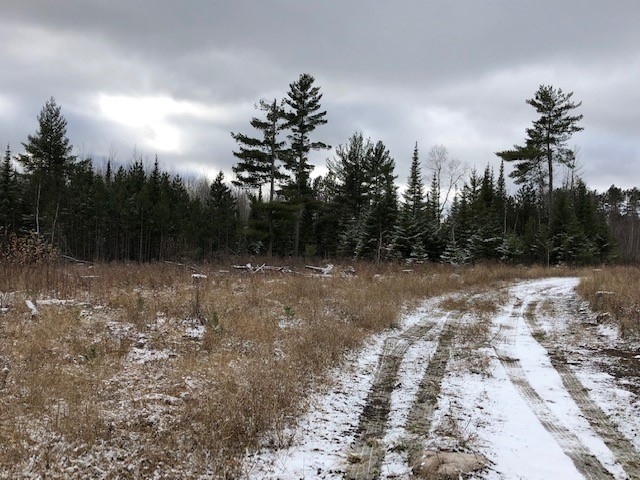
Figure 6: Looking west on red pine regeneration can be seen along with a reserve clump of balsam fir/white pine regeneration along with residual white pine and aspen.
